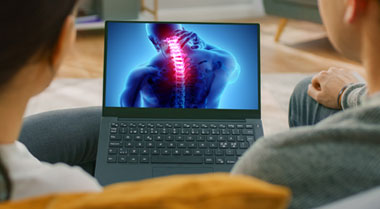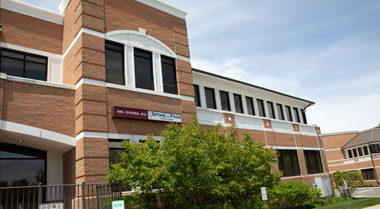Radiofrequency Ablation
Radiofrequency ablation, also called rhizotomy, is a non-surgical, minimally invasive procedure that uses heat to reduce or stop pain transmission. It is typically performed for pain originating from facet joints after the test medial/facet nerve block confirms the pain relief. Radiofrequency energy converts to heat and ablates or desensitizes the nerve that is causing the pain.
- Radiofrequency Denervation
- Radiofrequency Ablation
How long does the relief last?
It can take three or more weeks for the full effects of radiofrequency ablation. Pain might get worse before it gets better. The pain relief may last six months to a year or even longer. Sometimes, nerves do grow back. In such cases, the radiofrequency ablation may need to be repeated.
How is the procedure done?
- The patient lies flat on an X-ray table or with a small pillow under their stomach to slightly curve the back or neck.
- The skin in the area is cleaned and then numbed with a local anesthetic similar to what a dentist uses.
- Using fluoroscopy (live X-ray) for guidance, a special insulated needle is inserted into the skin and directed toward the facet nerve. Fluoroscopy is considered necessary in guiding the needle and placing it in the correct position.
- Once the needle is in the proper position, A radiofrequency probe is inserted into the needle and connected to a radiofrequency generator. A grounding pad is placed on the legs. A local anesthetic is injected to numb the area, and then the radiofrequency generator is turned on for 60 to 90 seconds, and it is repeated after adjusting the needle slightly. Most patients just feel muscle twitching and pressure; there is no pain associated with heating.
Where is the procedure done?
The procedure can be safely done in the office or surgical center. The only sensation patient feels is burning and stinging with the initial numbing medicine; after that, it's just mild pressure. If you have a pacemaker or defibrillator, then it is only done in the surgical center or hospital.
What do I expect after the procedure?
There's no postsurgical pain since we inject a long-acting anesthetic right after the procedure. After a day or two, pain may return and last for 3 to 4 weeks, rarely 8 weeks, especially a burning sensation over the skin. There are no restrictions after the procedure.
Educational Videos
Learn more about radiofrequency ablation by watching these educational videos.



